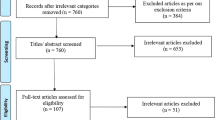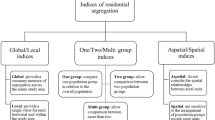Abstract
To know the number of city users is essential since it provides a big amount of useful information in the context of Smart City evaluations that traditional static measures—represented by the number of residents from census data—are not able to provide. In this paper we use spatiotemporal mobile phone data along with administrative data to develop a dynamic indicator for the number of city users. In doing so, we propose a multi-stage approach for high-dimensional data, that, in the first part, it permits to estimate the number of phone company users for different reference days by means of an approach based on Histogram of Oriented Gradients for data dimensionality reduction, and by means of a mix of k-means and Functional Data Analysis Model-Based Clustering methods for clustering days. The second part is aimed at employing a method—based on matching mobile phone and administrative data—to estimate the phone company market share at small area level, which is used to derive city users. Applying the method to the case study of the Municipality of Brescia, we find that our estimated market share outperforms the national level counterpart. Moreover, we find that the number of city users reaches a peak of 270–280 thousand during the central hours of autumn to spring weekdays.










Similar content being viewed by others
Notes
Our elaborations on ISTAT data.
For each SC, Aj > 0; j = 1, 2, …, JSC. If Cellj is completely included in SC, then Aj = 1, otherwise Aj < 1.
In the count of Residents, we exclude elderly people (> 80 years) and children (< 11 years), since we want to consider just those with a smartphone.
In fact, we found a structural change in the data collection around the 2015 summer months.
It has not been possible to compute the ETMS for SC 133, because administrative data do not report the number of residents.
References
Agrawal, R., Gehrke, J., Gunopulos, D., & Raghavan, P. (1998). Automatic subspace clustering of high dimensional data for data mining applications. ACM, 27(2), 94–105.
Ahas, R., & Mark, U. (2015). Location based services: New challenges for planning and public administration? Futures, 37(6), 547–561.
Albino, V., Berardi, U., & D’angelico, R. M. (2015). Smart cities: Definitions, dimensions, performance, and initiatives. Journal of Urban Technology, 22(1), 3–21.
Amjadian, P., & Sayedi, S. M. (2019). Reduced complexity architecture for normalization of histogram of oriented gradients. In 2019 27th Iranian conference on electrical engineering (ICEE) (pp. 1579–1583). IEEE.
Arabie, P., & De Soete, G. (1996). Clustering and classification. Singapore: World Scientific.
Becker, R. A., Caceres, R., Hanson, K., Loh, J. M., Urbanek, S., Varshavsky, A., & Volinsky, C. (2011). Route classification using cellular handoff patterns. In Proceedings of the 13th international conference on Ubiquitous computing (pp. 123–132). ACM.
Belongie, S. J., Malik, J., & Puzicha, J. (2001). Matching shapes. In Computer vision, ICCV 2001. proceedings. Eighth IEEE international conference (Vol. 1, pp. 454–461). IEEE.
Benevolo, C., Dameri, R. P., & D’Auria, B. (2016). Smart mobility in smart city. In T. Torre, A. M. Braccini, & R. Spinelli (Eds.), Empowering organizations (pp. 13–28). Cham: Springer.
Beyer, K., Goldstein, J., Ramakrishnan, R., & Shaft, U. (1999). When is “nearest neighbor” meaningful? In International conference on database theory (pp. 217–235). Springer, Berlin, Heidelberg.
Bibri, S. E., & Krogstie, J. (2017). Smart sustainable cities of the future: An extensive interdisciplinary literature review. Sustainable Cities and Society, 31, 183–212.
Bouveyron, C., Come, E., & Jacques, J. (2015). The discriminative functional mixture model for a comparative analysis of bike sharing systems. The Annals of Applied Statistics, 9(4), 1726–1760.
Bouveyron, C., Girard, S., & Schmid, C. (2007). High-dimensional data clustering. Computational Statistics & Data Analysis, 52(1), 502–519.
Calabrese, F., Ferrari, L., & Blondel, V. D. (2015). Urban sensing using mobile phone network data: A survey of research. ACM Computing Surveys (CSUR), 47(2), 25.
Carpita, M., & Simonetto, A. (2014). Big data to monitor big social events: Analysing the mobile phone signals in the Brescia smart city. Electronic Journal of Applied Statistical Analysis: Decision Support Systems and Services Evaluation, 5(1), 31–41.
Cheng, H., Zheng, N., & Qin, J. (2005). Pedestrian detection using sparse Gabor filter and support vector machine. In Intelligent vehicles symposium, 2005 proceedings (pp. 583–587). IEEE.
Cicerchia, A. (1996). Indicators for the measurement of the quality of urban life. Social Indicators Research, 39(3), 321–358.
Comune di Brescia. (2008). La mobilità territoriale delle famiglie bresciane—Flussi intracomunali e intraprovinciali, Documentazione demografica per la predisposizione del Piano di Governo del Territorio (PGT), Documenti di lavoro.
Dalal, N., & Triggs, B. (2005). Histograms of oriented gradients for human detection. In CVPR.
Di Bella, E., Leporatti, L., & Maggino, F. (2018). Big data and social indicators: Actual trends and new perspectives. Social Indicators Research, 135(3), 869–878.
Diener, E., & Suh, E. (1997). Measuring quality of life: Economic, social, and subjective indicators. Social Indicators Research, 40(1–2), 189–216.
Donoho, D. L. (2000). High-dimensional data analysis: The curses and blessings of dimensionality. AMS Math Challenges Lecture, 1, 32.
Febrero, M., Galeano, P., & Gonzalez Manteiga, W. (2008). Outlier detection in functional data by depth measures, with application to identify abnormal NOx levels. Environmetrics: The official journal of the Inter-national Environmetrics Society, 19(4), 331–345.
Finazzi, F., & Paci, L. (2017). Space-time clustering for identifying population patterns from smartphone data, In SIS 2017 statistics and data science: New challenges, new generations (Vol. 114, pp. 423–428). Firenze University Press.
Fleyeh, H., & Roch, J. (2013). Benchmark evaluation of HOG descriptors as features for classification of traffic signs. Falun: Högskolan Dalarna.
Gabrys, R., & Kokoszka, P. (2007). Portmanteau test of independence for functional observations. Journal of the American Statistical Association, 102(480), 1338–1348.
Gonzalez, M. C., Hidalgo, C. A., & Barabasi, A. L. (2008). Understanding individual human mobility patterns. Nature, 453(7196), 779.
Hartigan, J. A., & Wong, M. A. (1979). Algorithm AS 136. A k-means clustering algorithm. Journal of the Royal Statistical Society. Series C (Applied Statistics), 28(1), 100–108.
ISTAT. (2017a). Popolazione e Famiglie, 2017. http://dati.istat.it/Index.aspx. Accessed 17 July 2019
ISTAT. (2017b). Basi territoriali. Lombardia. 2011, in Basi territoriali e variabili censuarie. https://www.istat.it/it/archivio/104317. Accessed 17 July 2019
ISTAT. (2018). Popolazione e Famiglie, 2018. http://dati.istat.it/Index.aspx. Accessed 17 July 2019
Jacques, J., & Preda, C. (2014). Model-based clustering for multivariate functional data. Computational Statistics & Data Analysis, 71, 92–106.
Jovi, A., Brki, K., & Bogunovi, N. (2015). A review of feature selection methods with applications. In 2015 38th international convention on information and communication technology, electronics and microelectronics (MIPRO) (pp. 1200–1205). IEEE.
Ke, C., & Wang, Y. (2001). Semiparametric nonlinear mixed-effects models and their applications. Journal of the American Statistical Association, 96(456), 1272–1298.
Keogh, E., & Mueen, A. (2017). Curse of dimensionality. In: Encyclopedia of machine learning and data mining (pp. 314–315). Springer Publishing Company Incorporated. Authors: Claude Sammut, Geoffrey I. Webb.
Kobayashi, T., Hidaka, A., & Kurita, T. (2007). Selection of histograms of oriented gradients features for pedestrian detection. In International conference on neural information processing (pp. 598–607). Springer, Berlin, Heidelberg.
Lowe, D. G. (2004). Distinctive image features from scale-invariant keypoints. International Journal of Computer Vision, 60(2), 91–110.
MacQueen, J. (1967). Some methods for classification and analysis of multivariate observations In Proceedings of the fifth Berkeley symposium on mathematical statistics and probability (Vol. 1, No. 14, pp. 281–297).
Manfredini, F., Pucci, P., Secchi, P., Tagliolato, P., Vantini, S., & Vitelli, V. (2015). Treelet decomposition of mobile phone data for deriving city usage and mobility pattern in the Milan urban region. In A. M. Paganoni & P. Secchi (Eds.), Advances in complex data modeling and computational methods in statistics (pp. 133–147). Cham: Springer.
MEF, (2016). Dipartimento delle Finanze—dati e statistiche. https://www.finanze.gov.it/opencms/it. Accessed 17 July 2019
Metulini R., & Carpita M. (2019a). A strategy for the matching of mobile phone signals with census data. In G. Arbia, S. Peluso, A. Pini, G. Rivellini (Eds.), SIS 2019 smart statistics for smart applications book of short Papers (pp. 427–434). Pearson Publishing.
Metulini R., & Carpita M. (2019b). The HOG-FDA approach with mobile phone data to modeling the dynamic of peoples presences in the city. In M. Bini, P. Amenta, A. D’Ambra, I. Camminatiello (Eds.), IES 2019 innovation & society—Statistical evaluation systems at 360: Techniques, technologies and new frontiers book of abstracts, Cuzzolin Editing.
OECD. (2019). Metropolitan areas, OECD Regional Statistics (database). Retrieved July 16, 2019 from https://doi.org/10.1787/data-00531-en.
Oren, M., Papageorgiou, C., Sinha, P., Osuna, E., & Poggio, T. (1997). Pedestrian detection using wavelet templates. In 1997 IEEE computer society conference on computer vision and pattern recognition, proceedings (pp. 193–199). IEEE.
Paci, L., & Finazzi, F. (2018). Dynamic model-based clustering for spatio-temporal data. Statistics and Computing, 28(2), 359–374.
Papageorgiou, C., & Poggio, T. (2000). A trainable system for object detection. International Journal of Computer Vision, 38(1), 15–33.
Ramsay, J. O. (2004). Functional data analysis. In Encyclopedia of statistical sciences, Chapt 4. Wiley Online Library, Authors: Samuel Kotz Campbell B. Read N. Balakrishnan Brani Vidakovic Norman L. Johnson.
Ratti, C., Frenchman, D., Pulselli, R. M., & Williams, S. (2006). Mobile landscapes: Using location data from cell phones for urban analysis. Environment and Planning B: Planning and Design, 33(5), 727–748.
Salhi, A. I., Kardouchi, M., & Belacel, N. (2013). Histograms of fuzzy oriented gradients for face recognition. In 2013 International conference on computer applications technology (ICCAT) (pp. 1–5). IEEE.
Schapire, R. E. (2003). The boosting approach to machine learning: An overview. In Nonlinear estimation and classification (pp. 149–171). Springer, New York, NY.
Secchi, P., Vantini, S., & Vitelli, V. (2015). Analysis of spatio-temporal mobile phone data: a case study in the metropolitan area of Milan. Statistical Methods and Applications, 24(2), 279–300.
Sun, Y., & Genton, M. G. (2011). Functional boxplots. Journal of Computational and Graphical Statistics, 20(2), 316–334.
Sun, Y., & Genton, M. G. (2012). Adjusted functional boxplots for spatiotemporal data visualization and outlier detection. Environmetrics, 23(1), 54–64.
United Nations. (2015). World urbanization prospects. The 2014 revision. New York: Department of Economic and Social Affairs. Retrieved July 16, 2019 from http://esa.un.org/unpd/wup/Publications/Files/WUP2014-Report.pdf.
Van Etten, A. (2018). You only look twice: Rapid multi-scale object detection in satellite imagery. arXiv:1805.09512.
Zanini, P., Shen, H., & Truong, Y. (2016). Understanding resident mobility in Milan through independent component analysis of Telecom Italia mobile usage data. The Annals of Applied Statistics, 10(2), 812–833.
Author information
Authors and Affiliations
Corresponding author
Additional information
Publisher's Note
Springer Nature remains neutral with regard to jurisdictional claims in published maps and institutional affiliations.
Rights and permissions
About this article
Cite this article
Metulini, R., Carpita, M. A Spatio-Temporal Indicator for City Users Based on Mobile Phone Signals and Administrative Data. Soc Indic Res 156, 761–781 (2021). https://doi.org/10.1007/s11205-020-02355-2
Accepted:
Published:
Issue Date:
DOI: https://doi.org/10.1007/s11205-020-02355-2




